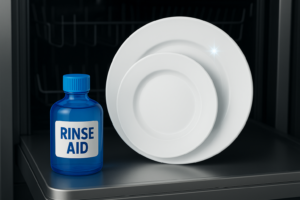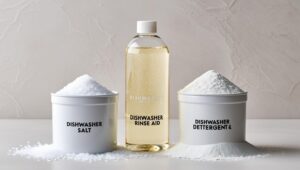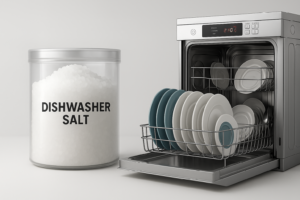Dishwashing has become much easier with the help of a dishwasher. It uses water and detergent to remove tough stains, food grease, and residue from dishes. However, washing alone isn’t always enough—maintaining the quality and appearance of your dishes is just as important.
Imagine this: you’ve just finished washing your dishes, whether by hand or in a dishwasher, expecting them to come out sparkling clean. But once they dry, you notice something disappointing—white spots and streaks covering the surface.
This isn’t a sign of an incomplete wash; it’s the result of hard water. Hard water contains minerals like calcium and magnesium, which remain on dishes as the water evaporates, leaving behind unsightly marks. This issue isn’t just limited to manual washing—it also happens in dishwashers, affecting the shine and cleanliness of your dishes.
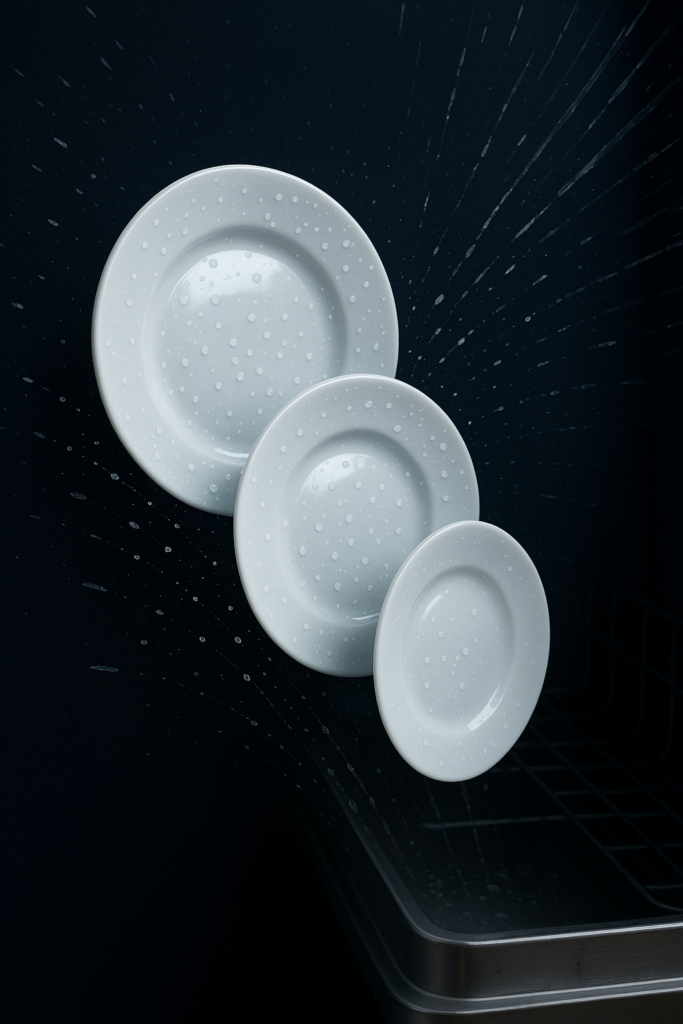
Fortunately, dishwashers come equipped with a solution to tackle this issue: dishwasher salt and rinse aid.
What Is Dishwasher Salt and Rinse Aid?
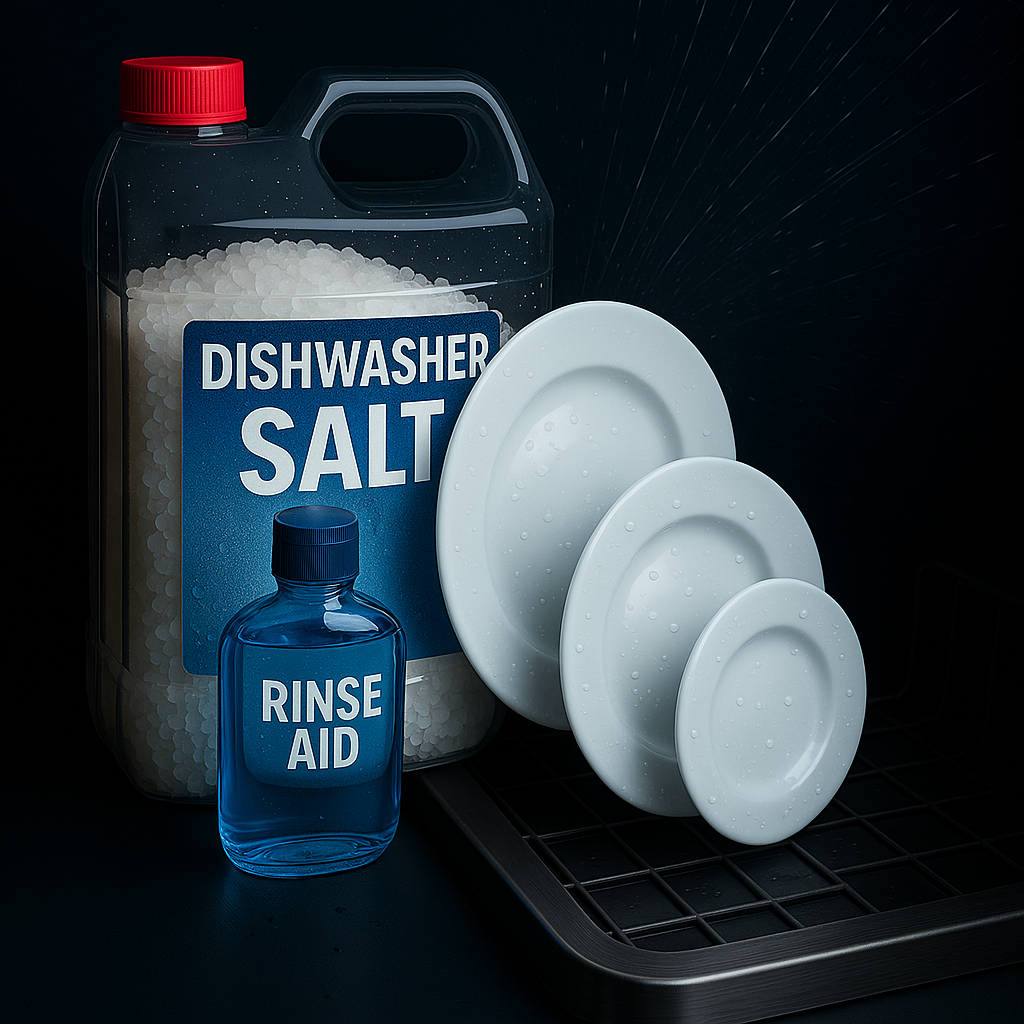
Dishwasher salt is used to soften hard water, preventing mineral buildup—especially calcium and magnesium—inside your machine. This helps protect internal components like the water softener unit and ensures better cleaning performance.
Rinse aid, on the other hand, helps water slide off dish surfaces during the final rinse. This reduces water spots and streaks, leaving your dishes clean, shiny, and streak-free.
Why Dishwasher Salt and Rinse Aid Are So Important
A dishwasher doesn’t just blast your dishes with water and detergent. It follows a process that involves:
- Pre-rinsing
- Loosening and removing food, grease, and stains
- Main wash and rinse cycles
- Final rinsing
- Drying
- Delivering clean, ready-to-use dishes
Where things go wrong:
Most dishwasher issues—like white spots, water streaks, cloudy glasses, or poor cleaning—are caused by hard water, which contains minerals like calcium and magnesium. These minerals:
- Leave limescale deposits
- Cause white stains on dishes
- Clog spray arms
- Reduce the efficiency and lifespan of your dishwasher
This is exactly where dishwasher salt and rinse aid come in. Each plays a vital role in tackling these hard water issues.
Main Benefits of Dishwasher Salt and Rinse Aid
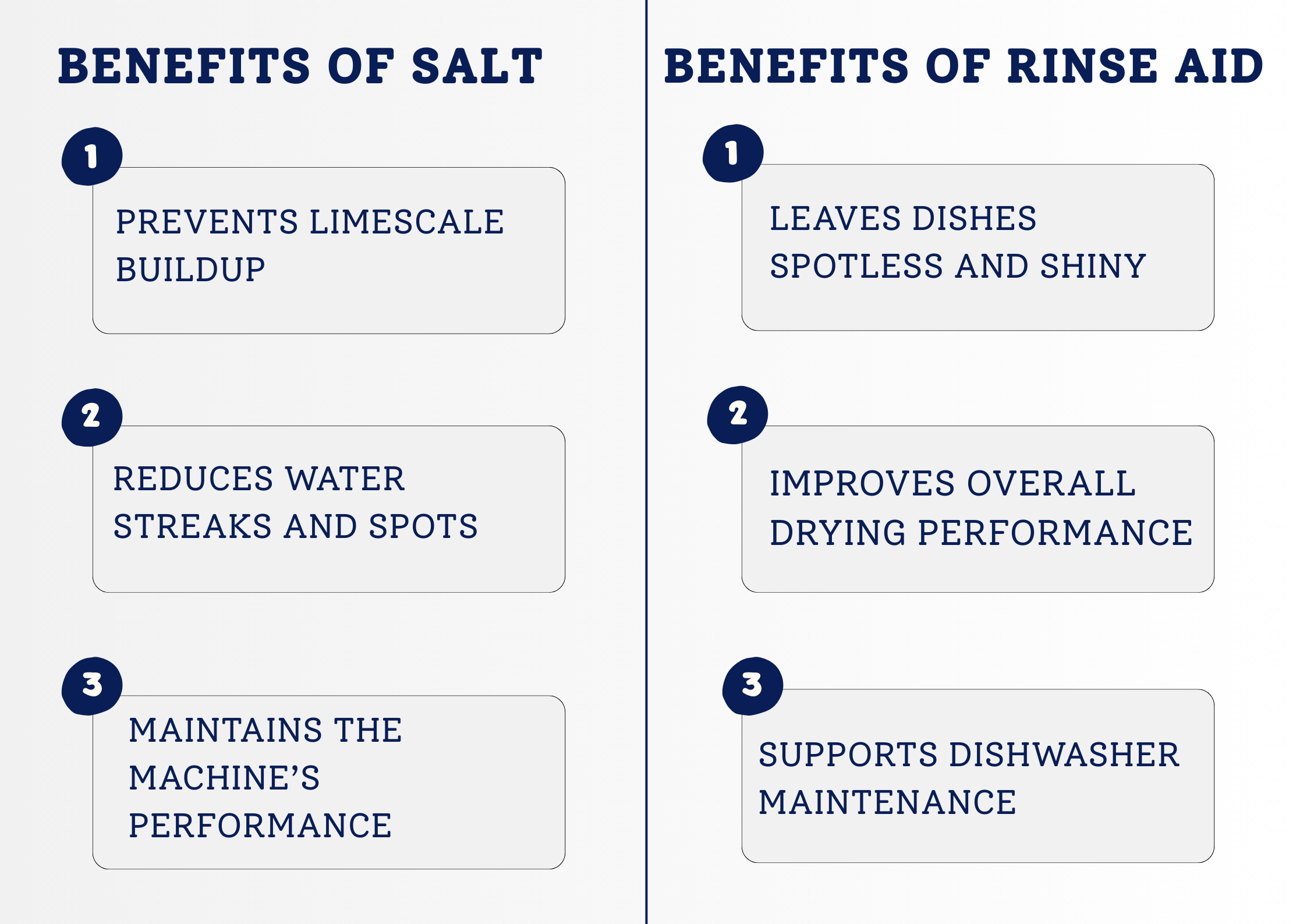
Dishwasher Salt
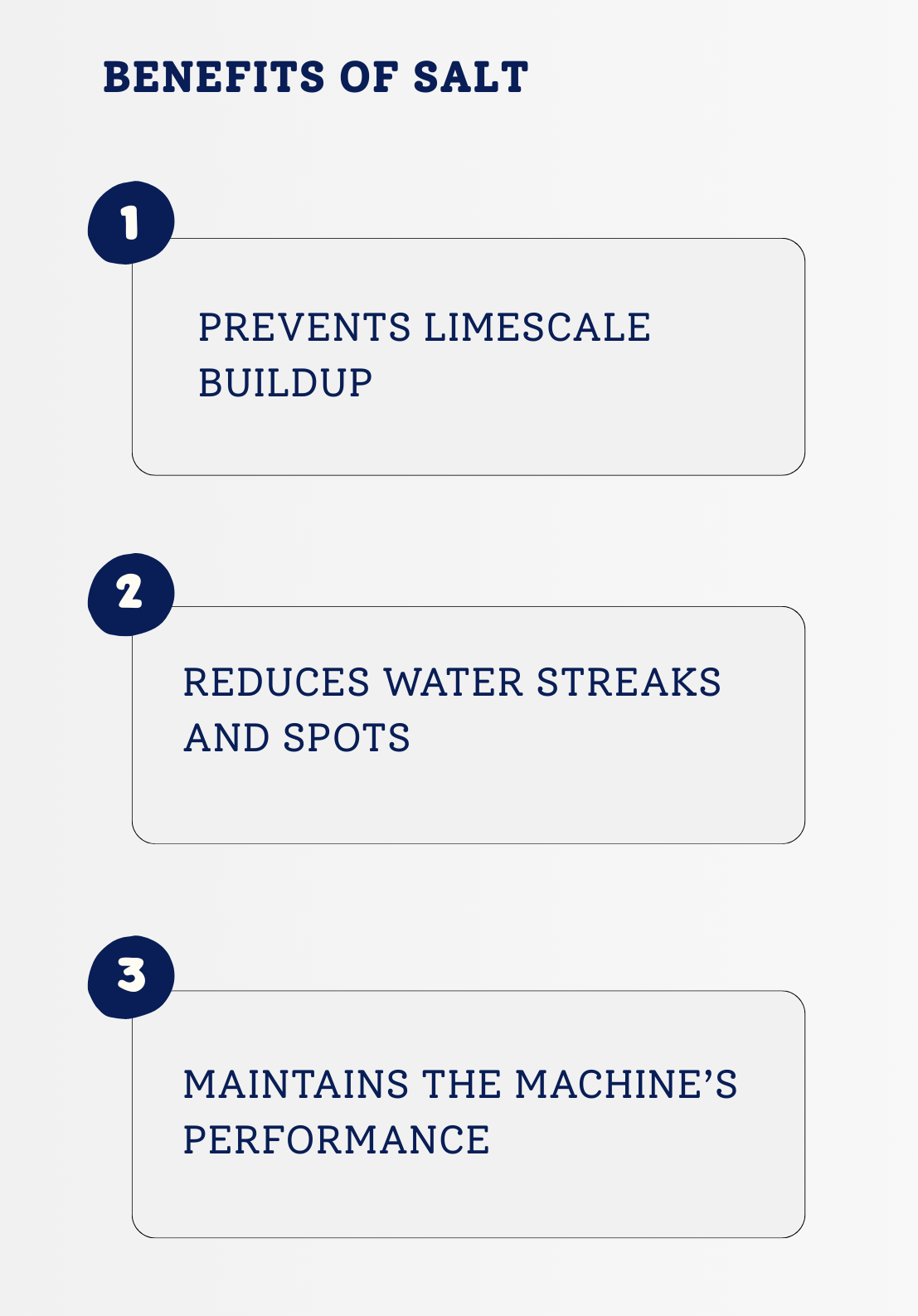
- Prevents limescale buildup in the internal parts of the dishwasher, especially in hard water areas.
- Reduces water streaks and spots on dishes by softening the water.
- Maintains the machine’s performance and extends its lifespan by preventing mineral deposits.
Rinse Aid: The Secret to Spot-Free Dishes

- Leaves dishes spotless and shiny by helping water drain off without leaving marks.
- Improves overall drying performance at the end of the wash cycle.
- Supports dishwasher maintenance by reducing water spots and film buildup over time.
Dishwasher Salt vs. Rinse Aid: What’s the Difference?
| FEATURE | DISHWASHER SALT | RINSE AID |
|---|---|---|
| Primary Function | Softens hard water | Lowers the surface tension of water |
| Main Benefit | Prevents limescale buildup | Helps water slide off dishes |
| Effect on Dishwasher | Protects internal parts and improves cleaning | Reduces drying time and prevents spots on dishes |
| Effect on Dishes | Enhances detergent effectiveness by softening hard water | Leaves dishes shiny and streak-free |
| Where It’s Located | Usually located at the bottom of the dishwasher, under the bottom rack near the filter. | Usually located inside the dishwasher door. |
How Do Dishwasher Salt and Rinse Aid Work?
Dishwasher Salt: The Science Behind It
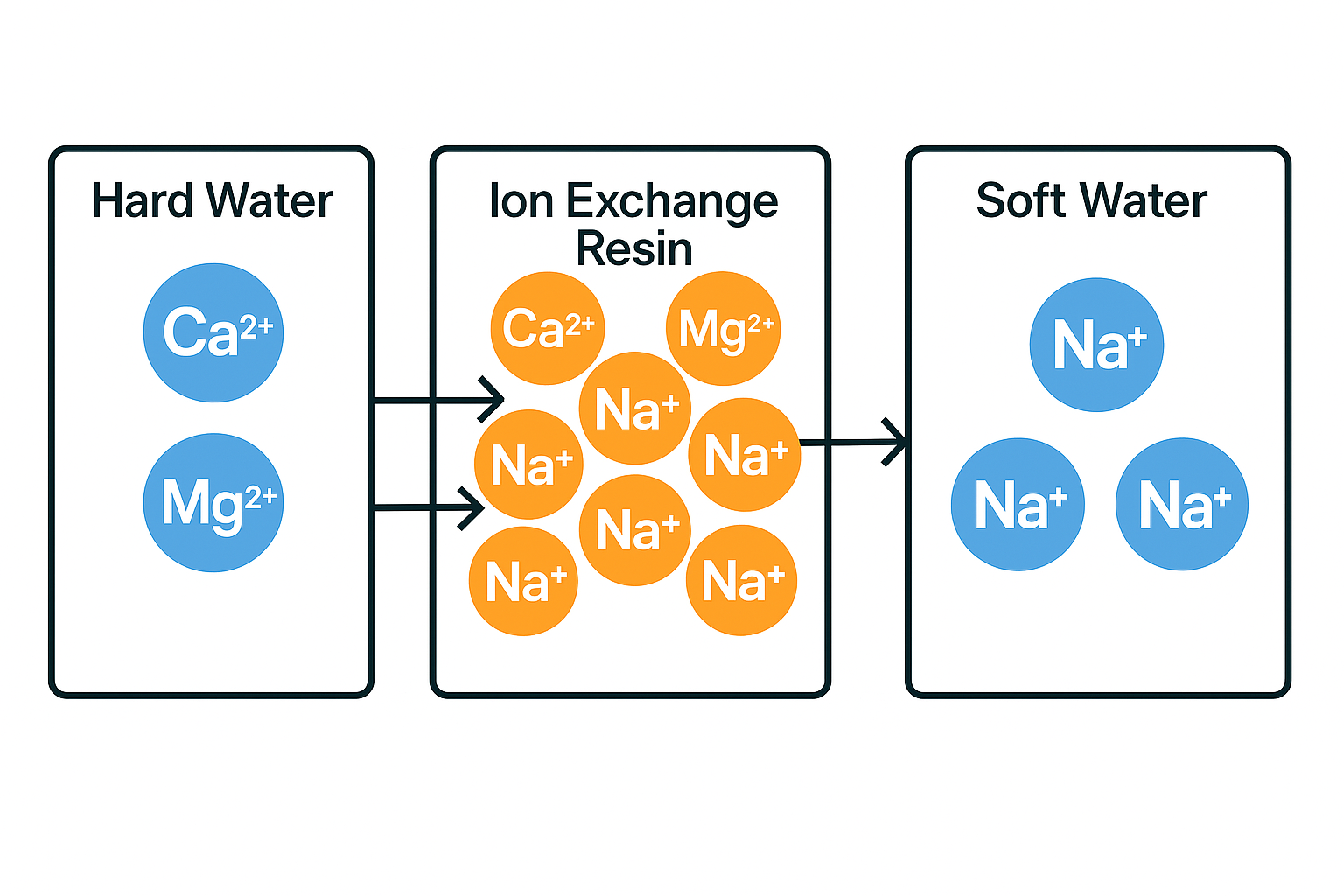
Before the main wash cycle, the dishwasher treats incoming water. Inside, an ion-exchange resin swaps calcium and magnesium ions with sodium ions.
Your dishwasher salt provides these sodium ions, allowing the resin to continue softening water effectively.
That’s why refilling dishwasher salt is crucial for spotless results and machine longevity.
Rinse Aid: The Secret to Spot-Free Dishes

Water has high surface tension, making it cling to dish surfaces. As it dries, it leaves behind spots and streaks.
Rinse aid, a surfactant, reduces surface tension, allowing water to sheet off evenly and dry faster.
- Quick drying
- No spots
- Sparkling, streak-free dishes
Where Are the Dishwasher Salt Reservoir and Rinse Aid Dispenser Located?


How often do you need to refill salt and rinse aid?
Most dishwashers will notify you via:
-
A light or icon on the control panel
-
A mobile notification, if your model supports smart connectivity


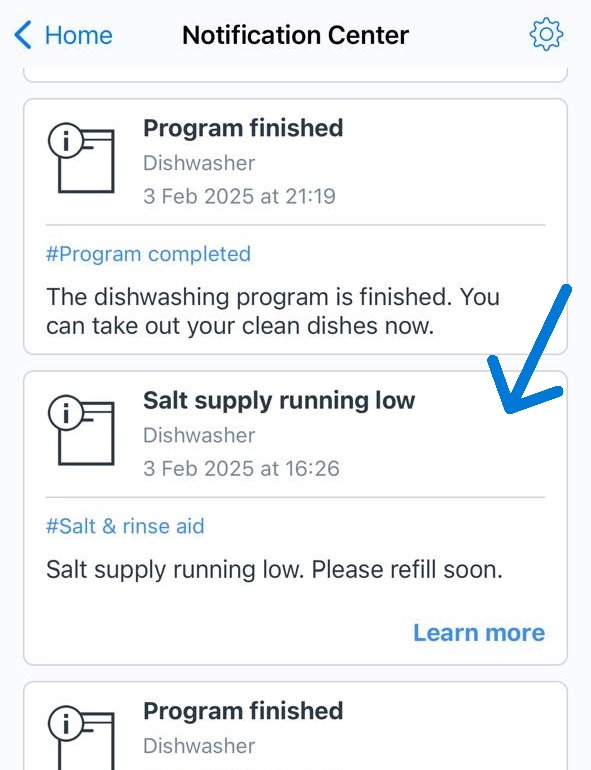
Tip: Only refill when the indicator comes on. Overfilling can cause spills or inefficient use.
What Happens If You Don’t Use Dishwasher Salt And Rinse Aid
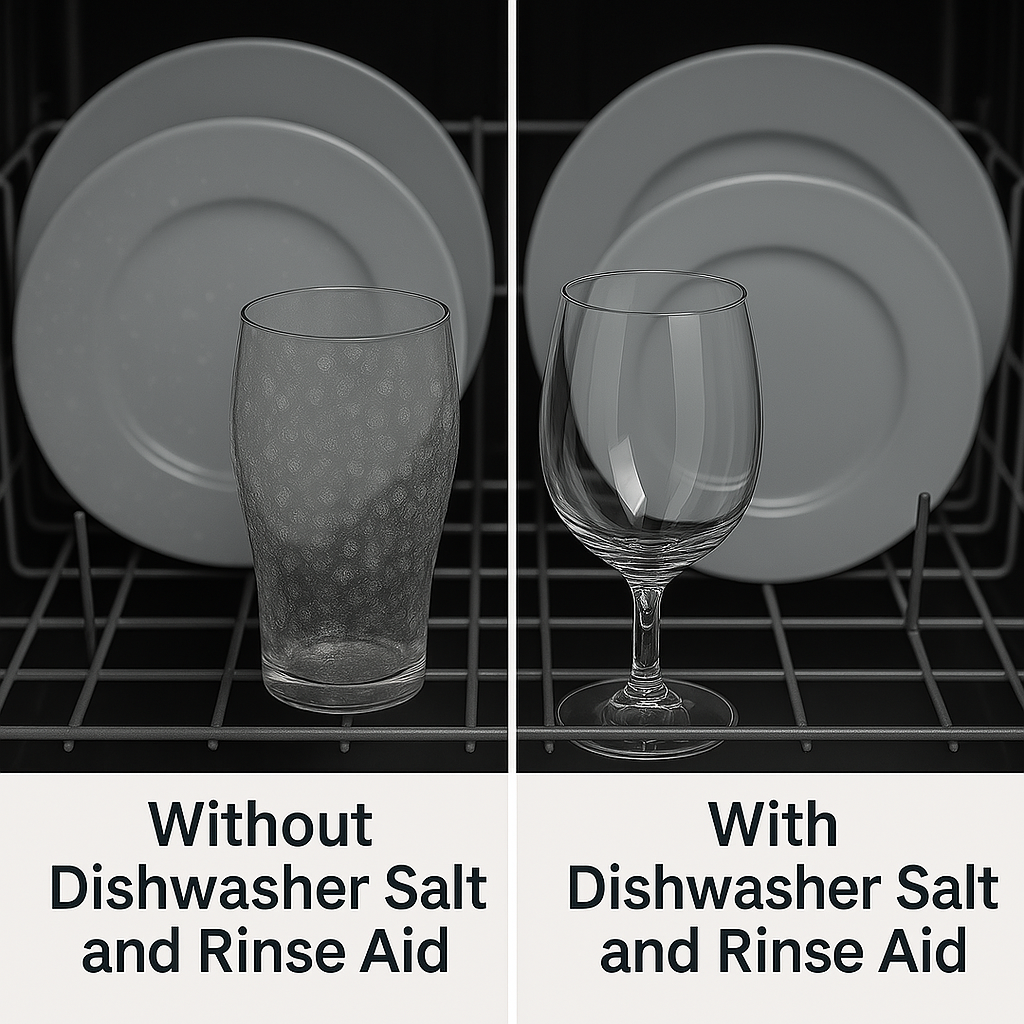
Neglecting to use dishwasher salt and rinse aid doesn’t just affect how clean your dishes look—it can also impact your dishwasher’s performance and lifespan.
Without dishwasher salt, hard water minerals can build up inside the machine, leading to limescale deposits, clogged spray arms, and reduced water flow. Over time, this buildup can decrease cleaning efficiency and even cause long-term damage to the internal components.
Skipping rinse aid can result in water droplets clinging to your dishes during the final rinse, causing spots, streaks, and a dull finish—especially on glassware and shiny surfaces.
If you want consistently spotless dishes and a longer-lasting dishwasher, regular use of salt and rinse aid is essential.
The Bottom Line: Don’t Skip Salt and Rinse Aid
Now you know exactly what happens when dishwasher salt and rinse aid aren’t used—and how essential they are for maintaining both clean dishes and a healthy dishwasher.
From preventing limescale buildup to ensuring spot-free, shiny results, these two components play a vital role in every wash cycle.
If you want your dishwasher to perform at its best, keep your dishes looking flawless, and avoid unnecessary repairs, don’t skip the salt or rinse aid.
They might seem like small additions, but they make a big difference in the long run.
